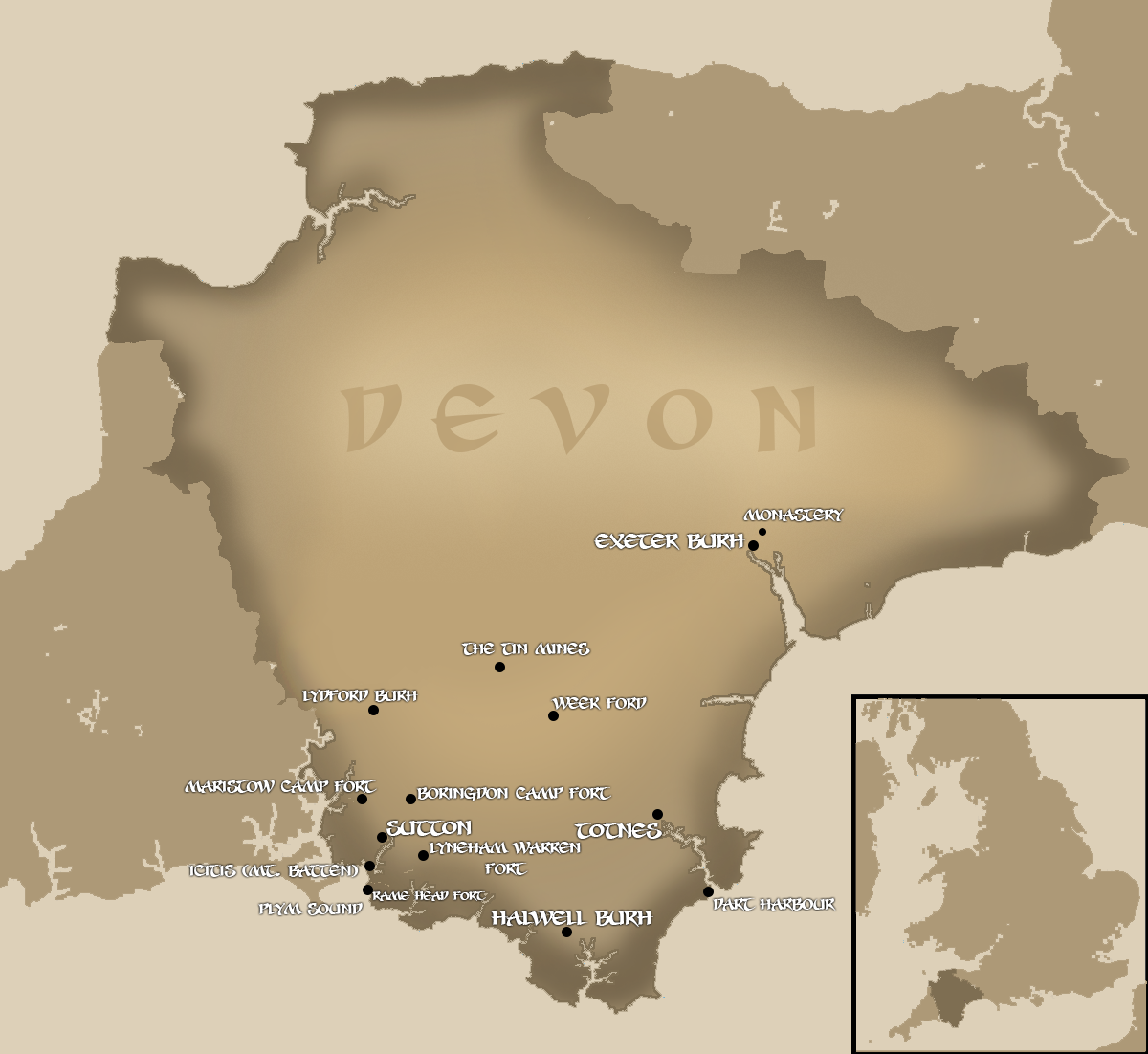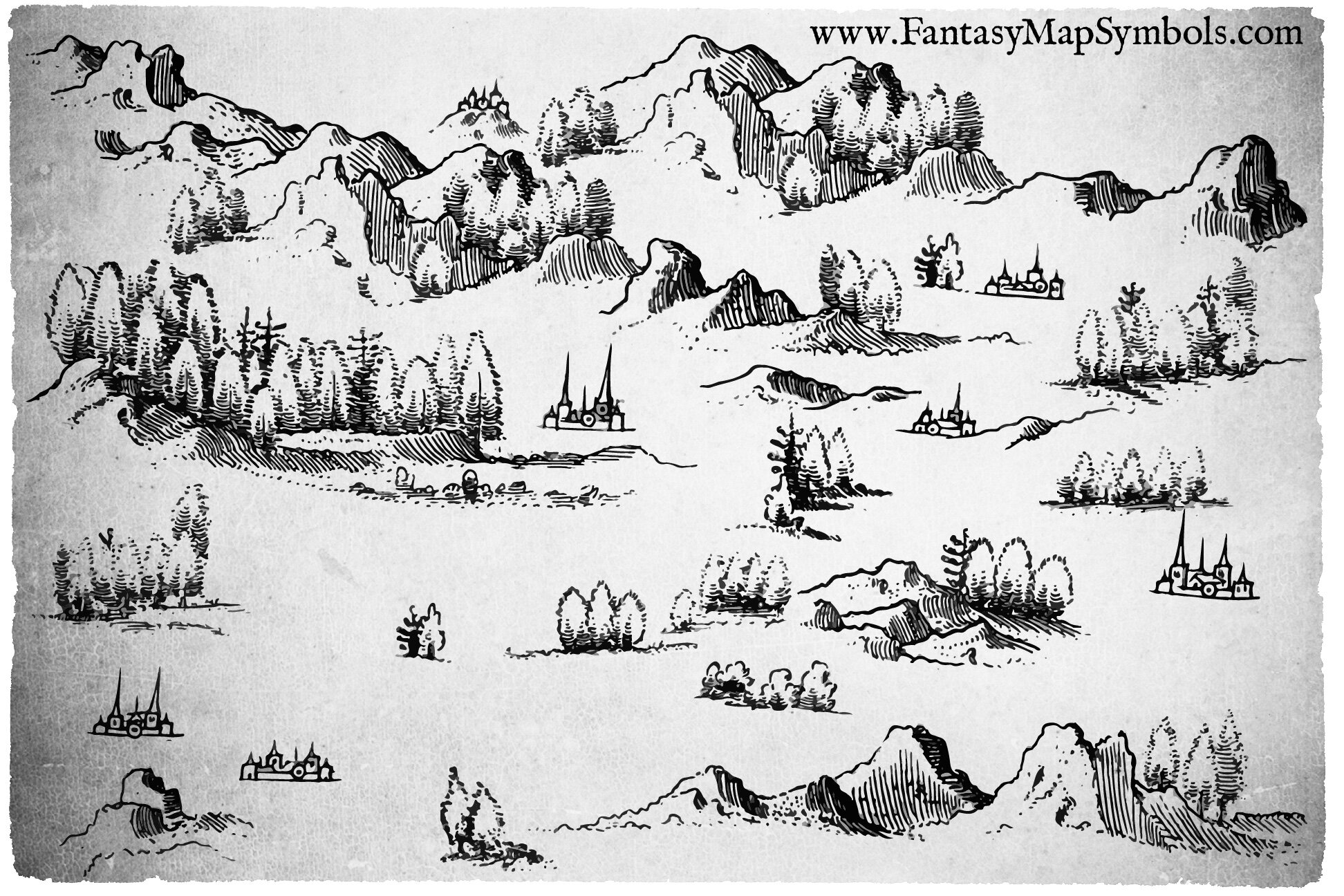From TSR to Historical Fiction.
Fig. 1
Fig 3
Fig. 5
By Jay Veloso Batista
I began to support my writing with fantasy map work when I wrote as a free-lance author for TSR and their Advanced Dungeons and Dragons product line in the years of 1987 to 1991. An example of that work was the Forgotten Realms KARA-TUR: The Eastern Realms Oriental Adventures boxed set, (Fig. 1) focused on fantasy based on the Medieval Chinese Middle Kingdom, the islands of Japan, Korea and southeast Asian Myths and legends. For this package I designed a large portion of the fantasy lands and wrote complete sections based on Korean history, Southern Chinese and Southeastern Asian myths and legends.
Working with TSR had many benefits for fantasy writers, and one was that they allowed their freelance contributors to add whatever we wanted to provide background, including naming places without reference stories or game adventures, which provided open ended locations for dungeon masters to create their own games and storylines. An example is the 2-section map from the boxed set that shows main roads, cities and locations, most of which I placed on the map with no actual game references, such as Turmish, Cormyr, Gulthmere forest, etc. Here is a close up of a section of the map: (Fig 2)
These AD&D maps seem dated by our standards today, but they were considered state of the art in 1990 before video games and computer graphics made them look dated and obsolete. More important, as a fantasy map there is no reason to worry about actual physical locations, historical references or archeological support. We could imagine new places, cities and regions and move them to fit our narratives,and leave enticing clues to enable exciting games.
Basing a fantasy novel on actual history requires a much higher level of accuracy based on current scholarship, historical records, and archeology, often requiring adjustments during the editing phase of the story craft due to new published information. This type of story setting requires research on location names that evolve over time, such as the Roman town of Eboracum which became the Saxon city of Eoforwick, then renamed Jorvik by the Vikings which evolved to today’s York, or those cities that completely change their names over time, such as the medieval city of “Sutton” which migrated down the Plym river to become the modern day city of Plymouth. This is one of the challenges of basing a novel in a historically accurate period and location as I have attempted in my Forerunner Series of novels set in the kingdoms of Britain under Danelaw.
Here is a map of England (Fig. 3) that shows the vassal kingdoms of the Danish invaders and the locations germane to my storylines. Preparing this map, one had to reference actual physical geographic locations, modern day cities and villages, and ancient locations that have moved or no longer exist. Exact locations are often in dispute: The battle of Ethandun is listed in the Anglo-Saxon Chronicles and scholars believe it was located near the modern-day city of Eddington, but this is in dispute.
The case of Eddisbury Hill provides insight into these challenges. This famous Cheshire hill fort (Fig. 4) is not in the location of the modern-day city of the same name. During the period of the novels, the setting was comprised of approximately 7 acres of a palisade protected fort town—here is some of the background I collected in my research of the site as a setting for the fictional work.
Eddisbury hill fort, aka Castle Ditch, is near Delamere, Cheshire, in northern England and was the largest and most complex of the seven hill forts in the county of Cheshire. My first book mentioned it in conjunction with Danish properties along the Delamere Forest in Mercia. This earthen work fortress was constructed before 200–100 BC and expanded in 1–50 AD as the Romans invaded. In the 1st century AD, the Romans overran and destroyed the site. Reoccupied in the 6th–8th centuries, an Anglo-Saxon burh was established at Eddisbury in 914. This photograph shows the current state of that fort’s east gate (Photo credit: Eddisbury Hill east Gate By Dave.Dunford - Own work, CC BY-SA 4.0):
According to sources, “the settlement concentrated on the eastern part of the fort's hill. During the medieval phase, the fort extended westwards and occupied the entire hilltop, and the defenses were enhanced through the addition of more ramparts and ditches. The enclosed area expanded to 7 acres and the defenses covered 15.5 acres. Eddisbury has been suggested as the site of an Anglo-Saxon burh built in 914 by Æthelflæd, daughter of Alfred the Great, and recorded in the Mercian Register in the Anglo-Saxon Chronicle but this has been disputed by historians. In the medieval and post-medieval period, the south-east part of the site was inhabited, at one point being used as a forester's lodge and the center of the fort has been cultivated since at least the 19th century, still undergoes ploughing, and was used as a quarry.”
Here is a map of Devon (Fig.5) from “On Viking Seas,” Book 3 of the Forerunner Viking Fantasy Series. One of my character’s storylines follows a trail from the Battle of Ethandun to Week Ford and the historical Devonshire tin mines. To keep the work as accurate as possible, I studied the area in the period 870 to 890, and learned a few fascinating facts that can be adapted to fit the narrative, such as the original name of Plymouth, the many forts and burhs in the countryside, the history of Totnes on the Dart River and Dart Harbor, both locations that still exist today. Exeter Burh and the Exeter Monastery were in place during the time under the Alderman Odo who will play a minor character in the novel’s events. Most interesting was learning all about the medieval Mount Batten which is considered by many historians to be the Roman location for Ictus, the rock in the middle of a bay where ancient Britons brought tin to barter with fleets from Europe, a few miles across the channel. These locations provide a solid backdrop for an adventure in the Viking era of England.
Get the advanced reader copy of his book, free of charge. He asks for an honest review in exchange.
Thorfinn and the Witches Curse
You might like…
Fig. 2
Fig. 4







